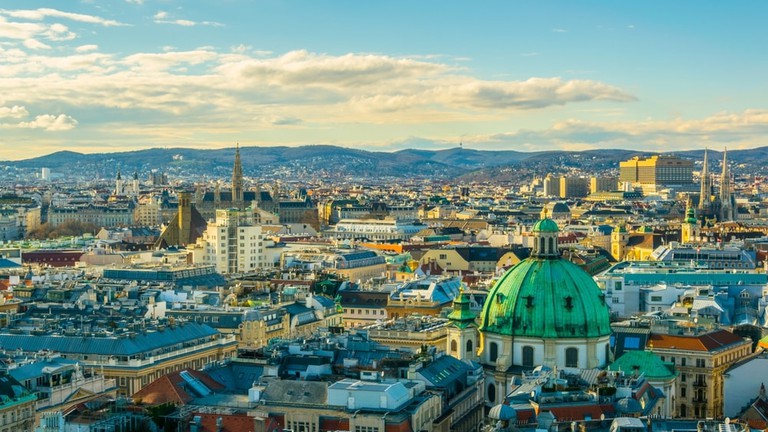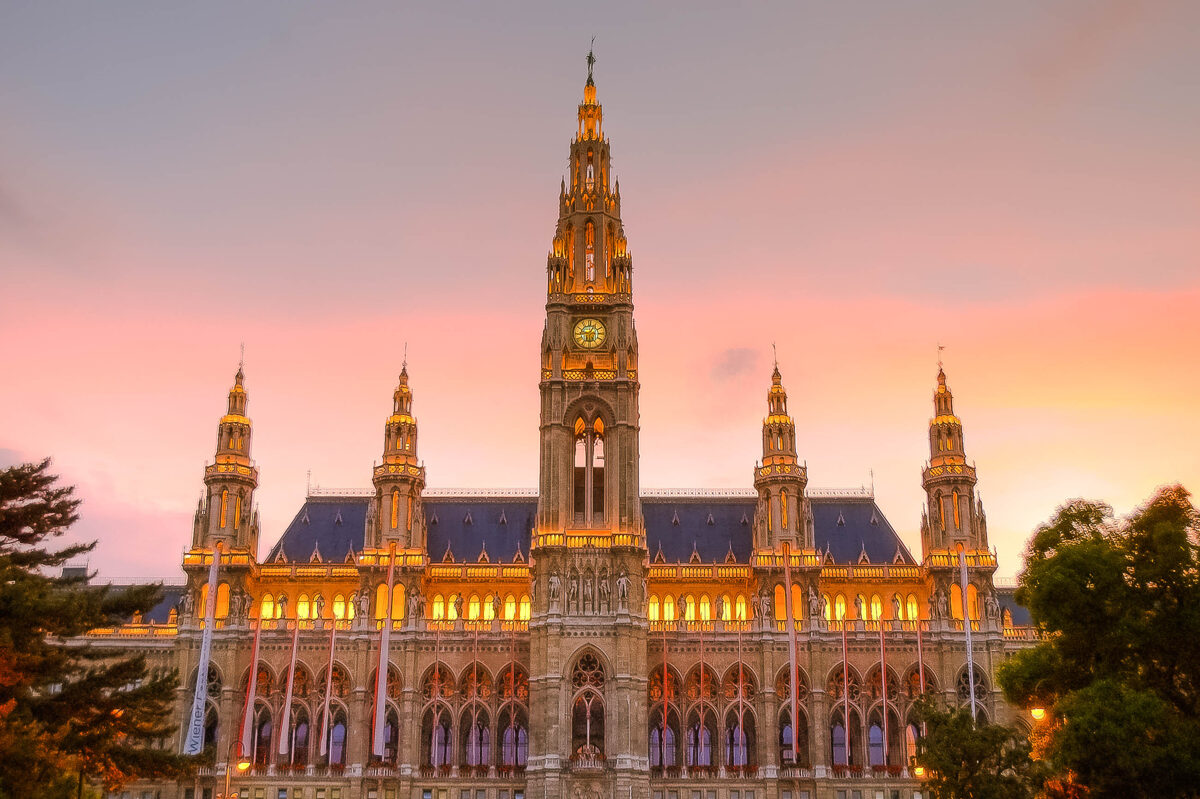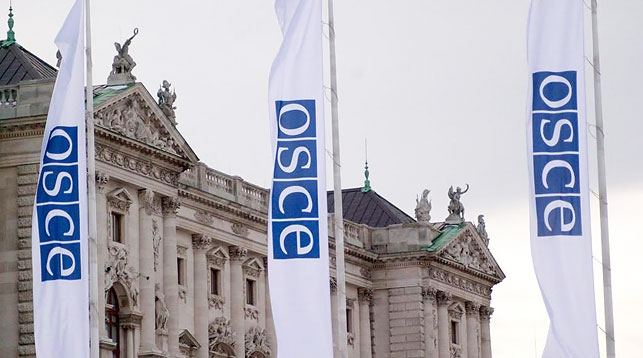Five sites to visit in Vienna that are not the castles

We all have
heard for some of the most famous tourist attractions in Vienna such as castles
Belvedere and Schönbrunn, Stephan’s Cathedral, and other sites such as Prater,
Zoo and many museums. If you have not yet visited these attractions this is not
the text for you. Here is the list of carefully chosen sites for the incoming
students of Central European University in Vienna. Please, have in mind current
restrictions due to COVID-19 pandemic and that some of them may be closed for
tours for the time being. So, without further due, I present you five
recommendations how to enrich your experience in Vienna during the studies.
1. City Hall - Rathaus
Vienna City
Hall, or in German Wiener Rathaus, is the seat of local government
and Mayor of Vienna. It was designed by Friedrich von Schmitdt between 1872 and
1883 in Neo-Gothic style, and it is located in the Inner City District (Innere
Stadt Bezirk), on Rathausplatz. The central tower is the most
impressive part of the building, 105 meters high and inspired by the town halls
of Flemish and northern German cities. If you look to the tower more carefully
you can see a man standing on top. There is an interesting story behind this
statue on top. Rathaus is known as the highest building in Vienna, and
few years ago one other building outdistanced it. In order to make it again the
highest building, local authorities decided to add this statue on the top –
known also as Rathausmann.

Especially
interesting may be the guided tours through the Vienna City Hall that
offers a close look-up at its state rooms. The itinerary comprises the Council
Chamber, the two Coat of Arms Halls, the Stone Halls, Festival Hall, Senate
Chamber, Grand Staircases and the Arcade Courtyard with a view up the Rathausmann.
Tours take place on Monday, Wednesday and Friday at 1pm, except on Council or
Diet meeting days and public holidays, and tickets are free of charge!
Guided tours are conducted in German, but there are also available multilingual
audio guides in English, French, Italian and Spanish. Unfortunately, currently
all tours are cancelled due to the pandemic outbreak, but please check
regularly the webpage of the City of Vienna for further notifications regarding the tours.
2. United Nations Island

One of the
four major office sites of the United Nations is the United Nations Office in
Vienna (UNOV) apart from those in New York, Geneva and Nairobi. The Office
complex is part of the Vienna International Centre (VIC) which hosts several
international organizations such as the International Atomic Energy Agency
(IAE), Preparatory Commission for the Comprehensive Nuclear-Test-Ban Treaty Organization
(CTBTO) and United Nations Commission on International Trade Law, UN Industrial
Development Organization, UN Office on Drugs and Crime, UN High Commissioner
for Refugees, UN Office for Outer Space Affairs, and the International
Commission for the Protection of the Danube River. The VIC, designed by
Austrian architect Johann Staber, was built between 1973 and 1979 just north of
the river Danube and it is colloquially known as UNO City. UNOV was
established on 1 January 1980, and was the third such complex to be created. One
more interesting thing about the VIC is that it is declared an extraterritorial
area, which means that it is exempted from the jurisdiction of local law.
UNOV offers in general both individual and group visits, and there are two different tours. Sixty-minute tour is prices 10 EUR for students, and Ninety-minute tour is priced 12 EUR for students. Additional lectures are offered which are charged 2 EUR each. Unfortunately, UN Information Service (UNIS) Visitors Service guided tours and lecture programmes at the Vienna International Centre have been suspended until further notice. But, until UNO City is opened again, the virtual alternatives of tour and lectures are offered, you can find more information here.
3. Wiener Weinwandertag – Drinking vine in
Vienna’s forest
If you want to
relax, take a long walk through the woods and stop by during the tour to try the
best vines from Austria, the Wiener Weinwandertag (Vienna Vine Hiking
day) is a perfect opportunity. Every year in Autumn the Vienna Vine Hiking Day
is organized in order for people to explore Vienna’s unique vineyards with lots
of opportunities to sample good wines and enjoy the view of the city. The most important
news for this year is that the tour is not cancelled due to COVID-19
pandemic, unlike many others. In fact, one new route is added for this year
along with three existing.
![]()
Vienna’s 700 hectares of vineyards and 190 vintners in the areas around Kahlenberg, Nussberg, Bisamberg, and Mauer, where the Danube and the proximity of the Vienna Woods provide optimal climatic conditions, are unique among major cities. Tour is free of charge, except for the vine you decide to try, and this year it will be organized on the first weekend in October (03.10; 04.10). If you are interested, you can find more information on MyVienna website.
4. Donaukanal

Another place
for relaxation and especially sunsets is Donaulkanal with its promenade offering
many places to sit near the river and have a drink. It is the perfect place to
free yourself of stress, or get out with friends. Danube Canal provide that
Riviera feeling with sandy beaches, music, cool cocktails and delicious food.
My recommendation for the drink is this special kind of vine called Sturm
which is available for a very brief period, usually from the end of September
until mid-October in Sturmzeit or Sturm time, the only part of
the year this drink is available due to the special method of making it. Because of rapid fermentation (which could
cause the bottle to explode if corked), Sturm cannot be stored and must be
consumed within a few days (or hours, depending on your mood and your company).
But what is Sturm? Sturm is a young wine that is basically fermented freshly
pressed grape juice. It tastes sweet, like a juice but with alcohol, and it
makes you to take more. Cheers!
5. OSCE Headquarters in Vienna

Organization for Security and Cooperation in Europe (OSCE) was founded in 1973 in Helsinki, Finland. One of its main bodies – OSCE Secretariat under the direction of the Secretary General is located in Vienna. OSCE offices are situated in two locations across Vienna. First one is the Hofburg Palace in the Innere Stadt, and the second, same as the UN, is in the Vienna International Centre. Unfortunately, their offices are closed currently, but you can attend online presentations if you are student. Next presentation is scheduled for October 14, and registration is possible via email. For more information visit OSCE website.